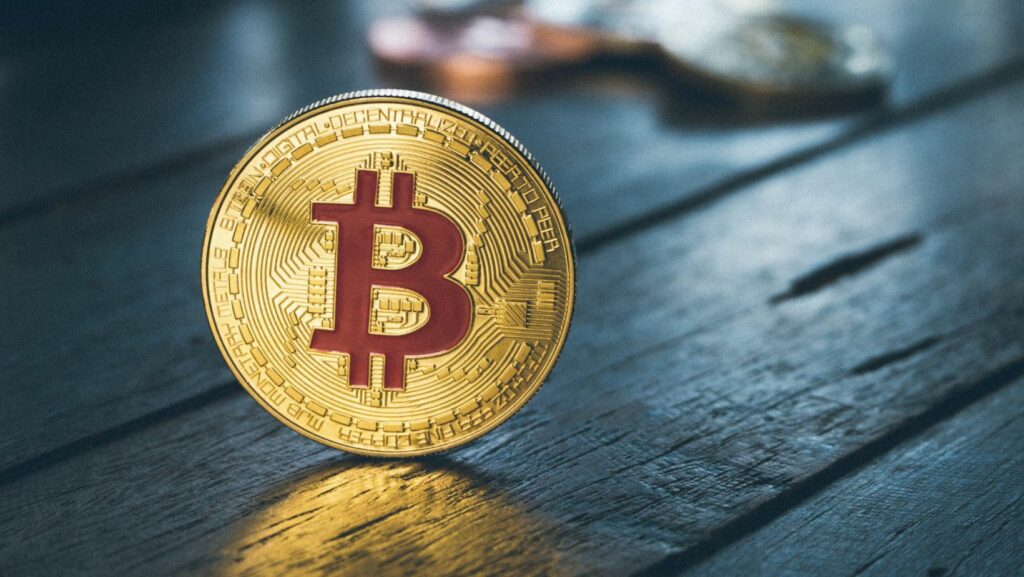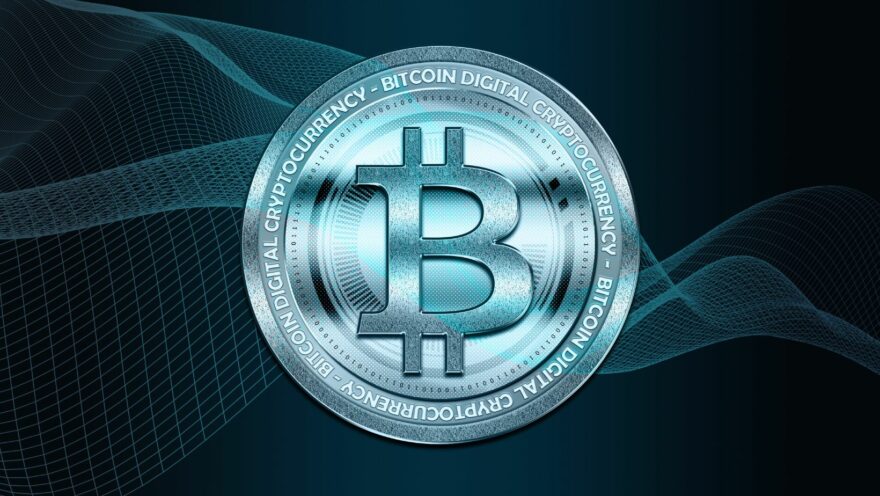Bitcoin is a decentralized digital currency, without a central bank or single administrator that can be sent from user to user on the peer-to-peer bitcoin network without the need for intermediaries. Transactions are verified by network nodes through cryptography and recorded in a public distributed ledger called a blockchain
What is Bitcoin?
Bitcoin is a digital asset and a payment system invented by Satoshi Nakamoto. Transactions are verified by network nodes through cryptography and recorded in a public dispersed ledger called a blockchain. Bitcoin is unique in that there are a finite number of them: 21 million.
Bitcoins are created as a reward for a process known as mining. They can be exchanged for other currencies, products, and services. As of February 2015, over 100,000 merchants and vendors accepted bitcoin as payment.
Bitcoin’s Price Today
Bitcoin is a cryptocurrency and worldwide payment system.: 3 It is the first decentralized digital currency, as the system works without a central bank or single administrator.: 1 Bitcoins are created as a reward for a process known as mining. They can be exchanged for other currencies,: 4 products, and services.: 2 As of February 2015 over 100,000 merchants and vendors accepted bitcoin as payment.: 3

To receive a bitcoin, a user must have a Bitcoin wallet and hold the digital currency. Bitcoins are stored in digital wallets and can be used to purchase items like coffee,: 4 books,: 5 and clothing.: 2 Bitcoin can also be exchanged in physical form such as the Open Dime or Bitlox.: 6
Bitcoin is unique in that there are a finite number of them: 21 million.:: 1 All bitcoins in existence have been created in such coinbase transactions. The bitcoin block chain is a public ledger that records bitcoin transactions.:: 2 A novel solution accomplishes this without any trusted central authority: maintenance of the blockchain is performed by a network of communicating nodes running bitcoin software.: : 3 : : Transactions of the form payer X sends Y bitcoins to payee Z are broadcast to this network using readily available software applications.: : 4 :
Network nodes can validate transactions, add them to their copy of the ledger,:: 5 and then broadcast these ledger additions to other nodes. To achieve independent verification of the chain of ownership each network node stores its own copy of the blockchain.: 6 About every 10 minutes,:: 7 a new group of accepted transactions called block,:: 8 is created as well as agreed upon by network participants through cryptography and recorded in a public dispersed ledger called blockchain.:: 9 These blocks are verified by network nodes through cryptography :: 10 and recorded in our public dispersed ledger called blockchain.;
How to Buy Bitcoin
If you want to get started with buying Bitcoin, here are a few things you need to know.
First, you need to set up a Bitcoin wallet. A Bitcoin wallet is where you store your Bitcoin and there are plenty of options to choose from. You can download a digital wallet on your computer or phone, or you can opt for a hardware wallet, which looks like a USB drive and allows you to store your Bitcoin offline.
Once you have your wallet set up, you will need to find a Bitcoin exchange. An exchange is a platform that allows you to buy and sell Bitcoin and other cryptocurrencies. Some exchanges only allow the buying and selling of Bitcoin, while others also allow for the trading of altcoins (alternative cryptocurrencies).
Once you have found an exchange that you want to use, you will need to create an account and verify your identity. This usually requires uploading some form of identification, such as a passport or driver’s license. Once your identity is verified, you will be able to link your bank account or credit card to the exchange so that you can buy Bitcoin.
Now that you have bought Bitcoin, it is stored in your digital wallet. You can either keep it there in the hopes that it will increase in value or use it to purchase goods and services online or offline. To make a purchase, simply enter the amount of Bitcoin that you want to spend into your digital wallet and then send it to the recipient’s digital wallet address.
Blockchain
When it comes to Bitcoin, the most well-known cryptocurrency, and blockchain, the technology that underlies it, there tends to be a lot of confusion. So, does Bitcoin have a blockchain?
What is Blockchain?
A blockchain is a digital, decentralized ledger of all cryptocurrency transactions. Powered by a secure, tamper-proof network of computers, blockchain verifies and records transactions without the need for centralized third-party oversight. This makes blockchain an incredibly powerful tool for transparent, secure financial transaction management.

While blockchain was originally created to support the Bitcoin network, the technology has since been adapted for use in a wide variety of industries beyond finance. From supply chain management to voting systems, there are nearly limitless potential applications for blockchain.
How does Blockchain Work?
The term “blockchain technology” can sound complicated, but the concept is actually quite simple. A blockchain is a digital record of transactions. The name comes from the fact that each “block” of data is linked to the previous “block” of data in a “chain.” This linkage makes it very difficult to change or delete any information in a blockchain.
Blockchain technology was first developed in 2009 as the system behind the cryptocurrency Bitcoin. But now, blockchain is being used for a wide range of other applications beyond digital currencies.
Some of the potential applications for blockchain technology include:
- Tracking ownership of assets such as property, cars, and art.
- Facilitating peer-to-peer lending.
- Streamlining supply chain management.
- Storing medical records.
- Voting.
What are The Benefits of Blockchain?
The blockchain is a decentralized, secure, and tamper-proof ledger that can be used to store any kind of data. Because it is decentralized, it is not subject to the control of any single entity, meaning that it is more secure and less vulnerable to attack than traditional databases.
The benefits of blockchain technology include:
- Increased security: Due to its decentralized nature, blockchain is incredibly difficult to hack. This makes it an ideal platform for storing sensitive data.
- Improved transparency: Because all data on the blockchain is public, it is much easier to track and verify than data stored in a traditional database.
- Faster transactions: Traditional databases can take days or even weeks to process transactions. With blockchain, transactions can be processed in minutes or even seconds.
- Lower costs: Because blockchain does not require the involvement of third parties (such as banks or other financial institutions), it can help reduce transaction fees.
Does Bitcoin Have Blockchain
Bitcoin is a cryptocurrency and worldwide payment system. It is the first decentralized digital currency, as the system works without a central bank or single administrator. The network is peer-to-peer and transactions take place between users directly, without an intermediary. These transactions are verified by network nodes through the use of cryptography and recorded in a public distributed ledger called a blockchain.
What is The Difference Between Bitcoin and Blockchain?
Bitcoin is a decentralized digital currency, without a central bank or single administrator, that can be sent from user to user on the peer-to-peer bitcoin network without the need for intermediaries. Transactions are verified by network nodes through cryptography and recorded in a public distributed ledger called a blockchain. Bitcoin is unique in that there are a finite number of them: 21 million.
Blockchain is a distributed database that maintains a growing list of data records, hardened against tampering and revision, even by operators of the data store’s nodes. Bitcoin uses blockchain technology to record its transactions. A blockchain is composed of blocks, each block holds a time-stamped batch of recent valid transactions. When miners verify new blocks of transactions and add them to the chain, they receives rewards in Bitcoins. Miners work to maintain the consensus on the blockchain by race to solve computational puzzles that confirm blocks of transaction. They were instrumental in Bitcoin’s early days, when computing power was scarce and electricity was cheap.
How do Bitcoin and Blockchain Work Together?
Bitcoin is a decentralized digital currency, without a central bank or single administrator, that can be sent from user to user on the peer-to-peer bitcoin network without the need for intermediaries. Transactions are verified by network nodes through cryptography and recorded in a public distributed ledger called a blockchain. Bitcoin is unique in that there are a finite number of them: 21 million.
Blockchain is a distributed database that holds records of digital transactions. It is constantly growing as “completed” blocks are added to it with each new transaction. Each block contains a cryptographic hash of the previous block, a timestamp, and transaction data (generally represented as a Merkle tree). By design, blockchain is resistant to modification of the data. It is an open, distributed ledger that can record transactions between two parties efficiently and in a verifiable and permanent way.
